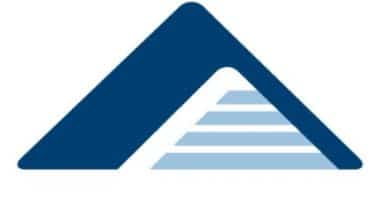Line of Business (LOB) is a frequent word that refers to products or services provided by a company or manufacturer for a specific client transaction or business necessity. Line of Business has a regulatory and accounting definition in the insurance sector to meet a statutory set of insurance policies. LOBs are beneficial to enterprises of all sizes for a variety of reasons, which we’ll see in this article. We’ll also learn about the secured and unsecured line of business credit, and how you can get them.
What Is a Line Of Business?
A line of business (LOB) is a product or service that a business provides to meet a specific consumer requirement. A bank, for example, offers LOBs such as loans, overdrafts, and mortgages to businesses of all sizes as well as people in need of finance. A line of Business is also referred to as an internal corporate business unit at times. Using an industry-analysis approach or other pertinent industry information, a Line of Business frequently analyses its position within an industry.
Line Of Business Examples
#1. Consumer banking
Personal banking and retail banking are other terms for consumer banking. Individual banking goods such as credit cards, loans, mortgages, and bank accounts are examples of consumer banking. This style of banking serves consumers as individuals rather than businesses. It’s a standard way for people to manage their money, get credit, and store money in a safe place. Consumer banking is classified into three groups based on its size: commercial banks, credit unions, and cooperatives.
#2. Small business banking
Small business banking offers capital to small and medium-sized businesses. Furthermore, it is an important function of the overall business financing market. Typically, this sort of banking provides financial assistance to many types of businesses. There are numerous reasons why small business banking is critical; for example –
- A small business requires an interest-bearing checking account.
- Mobile banking access is another critical element of a small business banking account.
- Small company banking increases efficiency and simplifies accounting.
- When using different vendors, Treasury Management of Small firm Banking delivers a holistic view of all your firm funds.
- Small business banking offers a business credit card, which is really useful.
- A money market account is another excellent component of small business banking.
#3. Mergers and Acquisitions (M&A)
Investment banks typically provide client guidance in areas such as legal structure, valuation, financing, capital structure, taxation, and other factors. Mergers and acquisitions (M&A) is a broad term that refers to the consolidation of businesses or assets through a variety of financial transactions such as mergers, acquisitions, consolidations, tender offers, asset purchases, and management acquisitions.
Merger structures are as follows:
- Horizontal merger
- Vertical merger
- Congeneric mergers
- Market-extension merger
- Product-extension merger
- Conglomeration
- Purchase Mergers
- Consolidation Mergers
#4. Property and Casualty Insurance
This type of business provides health, life, and property insurance to individuals and businesses, including automobiles and residences. So, property insurance covers things you or your business own, whereas casualty insurance includes liability coverage to assist protect you if you’re held legally responsible for an accident. Property and casualty insurance examples include:
- Insurance for Homeowners
- Automobile Insurance
- Insurance for Condominiums
- Insurance for Renters
- Power Sports Coverage
- Insurance for Landlords
Property and casualty insurance, on the other hand, excludes other types of insurance such as life insurance, health insurance, and fire insurance.
#5. Reinsurance
Reinsurance is a sort of insurance that a company purchases from another company to protect itself in the case of a significant claim. This sort of business offers insurance to other insurance firms; in other words, it has committed to cover specific types of claims in exchange for a fee. Reinsurance is defined as “insurance for insurance companies.” The primary goal of reinsurance is to ensure that no insurance firm is overly exposed to a particularly significant incident or disaster. Some of the primary advantages of reinsurance include:
- Specific hazards might be shared or transferred across companies.
- Companies might increase their profits by acquiring insurance elsewhere for less than the premium collected from customers.
- Reinsurance allows businesses to free up additional money, which aids in capital management.
- It enables businesses to accept new clients while avoiding the need to acquire extra financing.
- Other insurance providers can provide expert assistance to businesses.
#6. Brokerage for the general public
Individual investors can purchase securities such as stocks through this form of business. The majority of clients in this sort of brokerage are individuals. While there are small retail houses for elite clients, the majority of these brokerages are large organizations with high overheads because they typically require a larger client base than other brokerages. Brokers at retail brokerage firms frequently earn significant commissions, and their research teams offer investment recommendations for individual investors rather than institutional clients.”
Additional securities and financial products sold by retail brokerages include mutual funds, limited partnerships, options, and real estate investment trusts.
#7. Asset Management
This sort of business provides banking services to wealthy clients. Wealth management is typically defined as money management and investment advising business that gives solutions to an affluent clientele. Wealth management organizations make money by charging clients fees for the many services they provide. The majority of wealth management clients are high and ultra-high net worth individuals. Wealth management firms are classified into three types:
1. Product Suppliers
2. Customized Merchants
3. Planner/Coaches
Line Of Business Applications
Line of Business (LOB) applications are a type of computer software and application that is essential to company operations. They are typically a set of integrated systems that are unique to a company and are used to manage databases and smooth workflows. Technology has the ability to automate operations and make life easier, but you must first understand why your company requires LOB apps and how to adopt them.
What Is the Definition of Line of Business Applications?
There are numerous programs that might assist a firm in completing its tasks. Productivity apps, such as word processors and project management tools, are examples. Then there are LOB applications, which are designed expressly for a firm to meet the needs of a smaller set of individuals. For example, if you run an estate agency, your LOB applications might discover good properties, analyze sales data, and conduct demographic research in a given area.
Why Do You Need Line of Business Applications in Your Company?
The best way to comprehend why your company requires LOB apps is to look at a “problem” and “solution” analogy. Assume a company suffers with the recruitment process because it requires so much paperwork and manual data entry. Passing papers between departments is a pain, especially in today’s digital age.
To tackle the problem while also saving money and time, the company can collaborate with a software development team to create a functional roadmap for automating the recruitment process. Then, all of these components can be combined into a single, seamless LOB application. As a result, applicants apply online, paperwork is immediately analyzed, and invitations/rejections can be sent out with the click of a button.
There’s no arguing that organizations run more efficiently when they have apps tailored to their specific needs. However, without coding knowledge, it is tough to accomplish, especially if you want ownership and a distinct app.
How to Put Line Of Business Applications in Place
Developing a LOB app through coding necessitates skills that many firms lack. As a result, it is advisable to outsource IT software development to a team of professionals, which eliminates the possibility of errors. This development strategy is known as ‘high-code,’ which simply implies getting a lot of help from skilled coders.
High-code development can be costly to adopt, especially for small and medium-sized businesses. However, the end result is far superior to the low/no-code options because you may develop whatever your organization demands. Furthermore, by adopting high code, you are not limiting yourself technically because the team of skilled developers will have access to the latest trendy tech, which helps firms stay ahead of the competition.
High-code development is not only more functional, but it is also lot more secure. Many novice developers fail to include effective security features, which can lead to costly data breaches that harm your company’s reputation.
Line of business applications improve efficiency by automating, managing data, and optimizing company-specific operations – a gift your staff and clients will appreciate. However, implementing high-quality and secure LOB apps is tough, which is why we advocate for high-code development.
Business Line of Credit
A business line of credit, unlike a company loan, allows you to draw on it for business-related expenses such as inventory or payroll up to your borrowing limit. An unsecured business line of credit does not need you to provide any collateral to your lender. Because you are not pledging any assets as collateral for the loan, lenders may view it as risky and apply tight approval criteria.
Although qualifying requirements differ depending on the lender, you may be required to have a particular business credit score, annual income, and number of years in business to qualify.
How Does A Business Line of Credit Work?
A business line of credit is a more flexible kind of financing than a standard small business loan, in which you receive a flat sum of capital and return it over a certain period of time with interest.
A line of credit gives you access to a specific amount of money — say, $150,000 — and allows you to draw funds as needed. You only pay interest on the money you borrow. The monies are then repaid over time, usually on a weekly or monthly basis.
You can continue to use your company credit line as much as you want as long as you make timely payments and don’t go over your credit limit.
Rates and Costs for Business Lines of Credit
Rates for business lines of credit can range from 10% to 99% APR. Your interest rate will be determined by your lender, credit score, financial history, and time in business, among other variables.
In general, the better your credentials, the lower your interest rate. When compared to online lenders, banks often provide more competitive business line of credit rates.
You may also be required to pay fees on your line of credit, depending on your lender, such as:
- The amount charged to process your application is known as the origination fee.
- Account maintenance cost: A monthly or annual fee for maintaining your account and keeping your company line of credit operational.
- Draw fee: A fee assessed each time you use your credit line.
- If you do not use your line of credit within a certain amount of time, your lender may charge you an inactivity fee.
Secured vs. Unsecured Business Line Of Credit
A secured business line of credit requires you to put up assets as collateral, such as inventory or property. If you do not repay the credit line, a lender may confiscate your assets.
An unsecured business line of credit, on the other hand, does not require collateral; nonetheless, certain lenders may still want a personal guarantee or a claim on the assets of the business.
If you default on a loan, a personal guarantee provides a lender the power to seize your personal assets, such as your home. A UCC lien is similar; if you do not repay a debt, a lender might confiscate your business assets.
When evaluating lenders, inquire whether they want collateral, a personal guarantee, or a lien in order to locate the best alternative for your company.
Where Can I Get A Business Line Of Credit?
#1. Banking institutions and credit unions
Banks and credit unions can provide many forms of business credit lines, such as secured and unsecured business credit lines, as well as SBA lines of credit.
Although some lenders can provide cheap interest rates on business lines of credit, you’ll usually need to meet stringent conditions to qualify. You’ll most likely require a strong revenue and credit history, as well as several years in business.
Banks and credit unions, in comparison to online lenders, are more likely to need physical collateral to secure your credit line (particularly for greater limits), as well as to collect additional costs, such as yearly and inactivity fees.
#2. Online Lenders
When compared to banks and credit unions, online lenders such as Bluevine and Fundbox have more flexible business line of credit requirements. Some online lenders will collaborate with startups or businesses that have a poor credit history.
Online lenders often have simplified application processes and lower fees, and they may be able to issue small-business lines of credit in just a few days. However, private lenders are more likely than banks to charge higher interest rates and have smaller credit limits.
How Does An Unsecured Business Line Of Credit Work?
An unsecured business line of credit works similarly to a company credit card. In contrast to a term loan, which gives funds in a flat amount, businesses can use the funds made available through a line of credit as needed. And, with a business line of credit, you only have to pay interest on the money that you really utilize.
What Is the Role of the Line of Business?
Each product’s life-cycle management is the responsibility of a business line. See Chapter 9 for an example life-cycle. The LOB will manage the top-level collaboration(s) that drive the life-cycle stages and will engage shared services directly or indirectly to conduct the detailed work.
What Are the 4 Main Types Of Businesses?
The four most prevalent business structures are sole proprietorship, partnership, corporation, and S corporation.
What Is The Job description Of An LOB Manager?
The LOB manager is an employee who supervises other employees and business activities while reporting to a higher-ranking manager. He is in charge of the sales department’s operations. However, he will report to a senior executive-level manager.
In Conclusion,
Line of Business (LOB) is a frequent word that refers to products or services provided by a company or manufacturer for a specific client transaction or business necessity. There are numerous alternative terms for a line of business: product line; line of products; branch; industry sector; branch of industry; line of business; economic sector; field; field of activity; line of merchandise; business line; trade; line of business; branch of business. They all refer to a line of business.
Related Articles
- PRODUCT LINE: Types, Examples, and How It Works
- CREDIT LINE LOAN: What It Is And When To Use It
- CORPORATE BANKING: How It Works
- BUSINESS LINE OF CREDIT: Meaning, How to Get It & Best Banks






